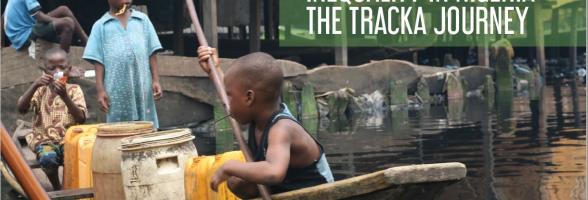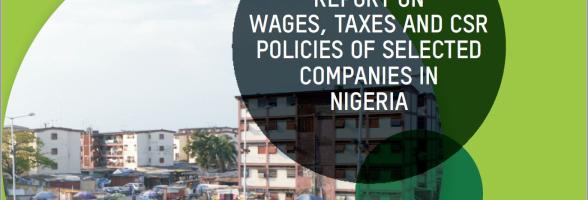- Africa's richest 1 percent own nearly half of the continent's total financial wealth.
- A tax of up to 5 percent on Africa’s super-rich could generate an annual amount of $11.9 billion, nearly enough to pay for the 2023 humanitarian requirements for Eastern and Southern Africa
- Oxfam urges a new era of public action, including public services, corporate regulation, breaking up monopolies, and enacting permanent wealth and excess profit taxes.
Africa’s seven richest men own more wealth ($52 billion) than the 700 million people who make up the poorest half of the continent’s population, reveals a new Oxfam report on inequality and global corporate power.
“Inequality Inc.”, published today as business elites gather in the Swiss resort town of Davos, finds that seven out of ten of the world’s biggest corporations, some with significant presence in Africa, have a billionaire as CEO or principal shareholder.
These corporations are worth $10.2 trillion, equivalent to nearly four times the combined GDPs of all African countries.
‘‘Our rigged economies are benefiting the super-rich while governments are struggling to provide crucial public services like healthcare and education to Africans across the continent. Governments must step up and ensure corporations stop squeezing workers, dodging tax, and plundering our planet in their quest for massive profits. If left unchecked, these corporations will continue to widen the inequality gap,’’ said Oxfam in Africa Director Fati N’zi-Hassane.
The past three years’ supercharged surge in extreme wealth has solidified while global poverty remains mired at pre-pandemic levels.
- The world’s five richest men have more than doubled their fortunes from $405 billion to $869 billion since 2020 —at a rate of $14 million per hour while nearly five billion people have been made poorer. If current trends continue, the world will have its first trillionaire within a decade, but poverty will not be eradicated for another 229 years.
- Billionaires are $3.3 trillion richer than in 2020, and their wealth has grown three times faster than the rate of inflation.
- Despite representing just 21 percent of the global population, rich countries in the Global North own 69 percent of global wealth and are home to 74 percent of the world’s billionaire wealth.
- Aliko Dangote, Africa’s richest person, holds a “near- monopoly” on cement in Nigeria. He owns Dangote Cement, which has enjoyed some of the world’s highest profit margins on cement (45 percent) while paying a tax rate of 1 percent over 15 years.
- In Nigeria, Aliko Dangote owns more wealth than the bottom half of Nigerians (109 million people). Dangote and Abdulsamad Rabiu, the country’s second richest man, have increased their fortunes by 29 percent since 2020, while the bottom 99 percent have become poorer.
- In December 2023, the Nigerian Investment Promotion Commission said it approved tax holidays for 34 companies seeking tax incentives and waivers under the Industrial Development Income Tax Act of 2023; among the beneficiaries are Dangote Sino Trucks West Africa Limited, Lafarge Africa Plc, Honeywell Flour Mills Nigeria Plc, Jigawa Rice Limited, and Stallion Motors Limited.
- Note that these companies benefit from tax breaks under the pioneer status regime, aiming to incentivize and stimulate their growth. This arrangement allows them to enjoy three to five years without paying corporate income taxes. Over the years, this policy has resulted in a cumulative total of approximately five trillion naira, constituting 18.519% of Nigeria's 2024 federal government budget as passed into law.
- In 2023, the National Bureau of Statistics reviewed its methodology for calculating the rate of unemployment based on the Nigeria Labour Force Survey (NLFS), leading to a crash in the rate of unemployment from 33.3 percent in 2020 to 5.3 percent (Q4 2022) and 4.1 percent (Q1 2023).
The report shows how a "war on taxation" by corporations has seen the effective corporate tax rate fall by roughly a third in recent decades, while corporations have relentlessly privatized the public sector and segregated services like education and water. African countries are nearly twice as reliant as OECD countries on revenue from corporate income tax to fund their public spending. An estimated $200 billion is lost annually due to corporate tax avoidance, with Global South countries tending to suffer the impacts disproportionately.
Meanwhile, people worldwide are working harder and longer hours, often for poverty wages in precarious and unsafe jobs. The wages of nearly 800 million workers have failed to keep up with core inflation ranging between 28 percent, food inflation hitting over 30 percent in Nigeria, to over 50 percent in Ghana and they have lost $1.5 trillion over the last two years, equivalent to nearly a month (25 days) of lost wages for each worker.
‘‘The bedrock of poverty is not in the lack of resources, but in the fact that the top 1% has hijacked the available resources. Additionally, the government has not deliberately invested in critical sectors to bridge the inequality gap. Consequently, this situation has led to increased poverty and inequality.’’ said Tijani, Hamza Ahmed, Acting Country Director, Oxfam in Nigeria.
Oxfam is calling on governments to rapidly and radically reduce the gap between the super-rich and the rest of society by:
- Revitalizing the state. A dynamic and effective state is the best bulwark against extreme corporate power. Governments should ensure universal provision of healthcare, education, and social protection and explore public goods and options in sectors from energy to transportation.
- Reining corporate power, including breaking up monopolies and democratizing patent rules. This also means legislating for living wages, capping CEO pay, and new taxes on the super-rich and corporations, including permanent wealth and excess profit taxes. Oxfam estimates that a wealth tax on the world’s millionaires and billionaires could generate $1.8 trillion annually.
- Reinventing inclusive and sustainable business. Competitive and profitable businesses do not have to be shackled by shareholder greed. Democratically owned businesses better equalize the proceeds of the business.
- The administrative suspension placed on processing Pioneer Status Incentive (PSI) applications under the purview of the Nigerian Investment Promotion Commission to allow for a comprehensive review and reform of the incentive regime.
- Sustain effort by the Nigeria Senate’s to amend the Federal Inland Revenue Service (FIRS) Act towards regulating the processes of granting corporate tax holidays, import duty waivers and investment incentives to investors and businesses in Nigeria in a bid to cut down revenue lose to corporate incentives.
- The process of granting incentives must be transparent, fostering public discourse on opportunity cost elements. Tax expenditures should undergo parliamentary oversight and public debate. We urge the government to establish a dashboard for public access to data on tax incentives, enhancing awareness and trust. The National Assembly should promptly call on the Federal Government to publish the Tax Expenditure Report, showcasing a commitment to transparency and accountability in incentive management.
ENDS
Maxwell Osarenkhoe | Communication Officer | maxwell.osarenkhoe@oxfam.org | +234 807 594 9898
For more information about Oxfam and its work in Nigeria, follow us on Twitter, Facebook, Instagram and LinkedIn
Download Oxfam’s report “Inequality Inc.” and the methodology note
Based on data from the UBS Global Wealth Report 2023, Oxfam calculated that the seven richest Africans who collectively own $52 billion have more wealth than the poorest half of the continent’s population who collectively own $ 49.6 billion in 2022.
It will take 229 (almost 230) years to ensure the number of people living under the World Bank poverty line of $6.85 is reduced to zero.
According to the IMF’s World Economic Outlook Database, the combined GDP of economies in Africa in 2023 is $2,867 billion.
Oxfam defines windfall profits as those exceeding the 2018-2021 average by more than 20 percent.
World Bank data has in the past shown that Africans pay more than others worldwide for cement.
A progressive wealth tax on African millionaires and billionaires at a rate of 2 percent on net wealth above $5 million, 3 percent on net wealth over $50 million, and 5 percent on wealth above $1 billion, could generate $11.9 billion dollars a year, nearly enough to pay for the United Nations’ 2023 humanitarian requirements for Eastern and Southern Africa ($ 12.5 billion).Based on the World Bank Atlas of Sustainable Development Goals 2023, South Africa has a Gini coefficient of 0.63. The country’s four richest billionaires Johann Rupert and family, Nicky Oppenheimer and family, Patrice Motsepe, and Koos Bekker have as much wealth ($22.5 billion as the bottom 60 percent of the population ($22.7 billion).

